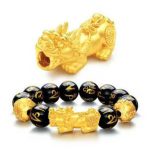Of course. The ancient Chinese practice of predicting human events through celestial phenomena, known as astrology (often called “astro-omenology” or divination by observation in ancient China), was a vast and sophisticated system of knowledge. It wasn’t mere superstition but was built upon a unique cosmology centered around the concept of “cosmic resonance” or “the interaction between Heaven and Man.”

The core belief was that Heaven and humanity were interconnected parts of a single, organic whole. The sky was seen as a giant screen onto which all human affairs, especially those of the emperor and the state, were projected. The will of Heaven (Tian Dao) was believed to manifest through changes in the sun, moon, and stars (celestial phenomena), displaying omens of fortune or disaster to warn the ruler.
This system was primarily divided into two main branches:
Judicial Astrology: Focused on predicting state affairs like war, imperial succession, and harvests, serving the royal court.
Horoscopic Astrology: Predicting an individual’s fate based on stellar positions at birth (similar to Western astrology). This was not the dominant form in mainstream ancient Chinese culture; Judicial Astrology held that position.
Here are the specific methods and primary objects of observation used by the ancients for prediction:
I. Theoretical Foundation: Cosmic Resonance
This was the bedrock of all predictions. It posited that:
Celestial phenomena were the language of Heaven: The normal movements of celestial bodies (like the changing seasons) represented the “constant Way of Heaven.” Abnormal phenomena (like eclipses, comets, meteors) were seen as “Heaven displaying images, revealing good and bad fortune”—warnings from Heaven about the ruler’s failings or omens of future events.
The Emperor was the Son of Heaven: The emperor’s actions directly resonated with Heaven. A virtuous ruler would be rewarded with auspicious signs (like propitious stars or radiant clouds), while a corrupt one would be warned with calamitous portents (like earthquakes, solar eclipses).

II. Primary Objects of Observation & Their Interpretations
Dedicated royal officials (such as the Grand Historian or Astronomer Royal) were responsible for observing and recording celestial events.
- The Sun and Moon
Solar Eclipse: The most ominous portent. Symbolized “Yin overwhelming Yang,” typically interpreted as a sign of the emperor’s lack of virtue, treacherous ministers in court, or imminent national disaster. Emperors often issued “Edicts of Self-Reproach” in response, engaging in fasting, pardons, and other rituals to appease Heaven.
Lunar Eclipse: Considered less severe than a solar eclipse, but still inauspicious. Often associated with the empress, the imperial harem, high officials, or predicted issues related to warfare and punishments.
Sunspots: Recorded in the Book of Han’s Treatise on the Five Elements, these were seen as “crows in the sun,” symbolizing the emperor being misled.
Solar/Lunar Halos: The luminous rings around the sun or moon. Their color, shape, and position were used to predict weather, military conflicts, or treasonous officials.
- The Five Planets (The Five Elements)
Referring to the five visible planets: Venus, Jupiter, Mercury, Mars, and Saturn. They were intricately linked with the theory of Yin-Yang and the Five Phases:
Venus (Tai Bai, “The Great White”): Master of weapons and war. Unusual brightness, color, or erratic movement foretold impending conflict.
Jupiter (Sui Xing, “Year Star”): A benefic planet, governing fortune and agriculture. Its annual position in the zodiac (“Jupiter’s cycle”) was correlated with a specific terrestrial region (“field allocation”) to predict its fortunes.
Mercury (Chen Xing, “Time Star”): Associated with law, punishment, and floods.
Mars (Ying Huo, “Sparkling Deluder”): The most malefic planet. Master of disaster, famine, pestilence, and death. Its retrograde motion near Antares (Xin, “The Heart”)—an event called “Ying Huo Shou Xin”—was considered an extreme omen, suggesting the emperor might die or be deposed.
Saturn (Zhen Xing, “Guard Star”): Governed land and construction.
Planetary Conjunctions (like “the alignment of the five planets”) were seen as great auspicious signs, heralding the rise of a sage ruler or an era of peace. Close encounters between planets were interpreted as signs of court intrigue or turmoil.
- Stars and Constellations
Twenty-Eight Lunar Mansions: These were 28 sections of the sky along the ecliptic. Each mansion held specific symbolic meaning. For example, Xin Su (Heart Mansion) represented the emperor, Fang Su (Room Mansion) the court, and Mao Su (Pleiades) represented foreign tribes.
The Big Dipper (Ursa Major): Seen as the “Northern Bushel” and the “Imperial Chariot,” regulating cosmic order and earthly time/direction. Its clarity and brightness were tied to the stability of imperial power.
Comets: The most famous harbingers of doom. Known as “banner stars” or “besom stars,” their appearance was invariably linked to war, plague, dynastic overthrow, and great upheaval. Halley’s Comet, for instance, was recorded in China and often coincided with major historical turning points.
Meteors/Meteor Showers: Generally viewed unfavorably as “stars falling like rain,” potentially presaging the death of an important figure or social unrest, though some specific meteors were considered lucky.
- The “Field Allocation” Theory: Bridging Heaven and Earth
This was the most distinctive feature of Chinese astrology. The ancients systematically correlated celestial regions (primarily the 28 Mansions) with specific terrestrial kingdoms or provinces.
When an abnormal celestial event occurred in a specific sky sector, it was interpreted as a prediction for the corresponding earthly region.
For example:
The Heart Mansion (Scorpius) corresponded to the region of Yu Zhou (modern Henan).
The Pleiades corresponded to barbarian lands (northern nomadic regions).
If a comet swept through the Tail Mansion, it might predict military disaster for the corresponding Yan region (modern Beijing area).
III. Famous Historical Examples
King Wu’s Revolt Against King Zhou: The Huainanzi text records that when King Wu of Zhou launched his campaign, an auspicious “alignment of the five planets in the Room Mansion” appeared.
Mars Stationing in Heart: The Records of the Grand Historian notes that in the 36th year of Qin Shi Huang, the “Ying Huo Shou Xin” omen occurred. It was deemed supremely inauspicious, and the First Emperor died the following year during a tour.
Liu Bang Entering the Pass: The Records of the Grand Historian states that when Liu Bang (founder of the Han Dynasty) reached Bashang, the five planets clustered in the Well constellation, interpreted as a divine mandate for his rule.
Conclusion & Evaluation
From a Scientific Perspective: Modern science, of course, dismisses any physical causal link between celestial movements and human fortune.
Historical Value: However, this system spurred incredibly precise and continuous astronomical observation in ancient China, resulting in the world’s most complete and continuous records of celestial events (e.g., Halley’s Comet, sunspots, supernovae). These are invaluable for modern astronomical research.
Political & Philosophical Function: It was, in essence, a tool of political philosophy and moral admonishment. By linking celestial phenomena to human affairs, it served to:
Sanctify Imperial Power (the Mandate of Heaven).
Restrain Imperial Power (warning the emperor to rule justly or face Heaven’s punishment).
Explain Uncertainty, providing a coherent framework for understanding unpredictable disasters and political changes, thereby helping to stabilize society.
Therefore, understanding ancient Chinese astro-omenology is not merely about understanding a method of divination; it is a key to unlocking the politics, philosophy, and culture of ancient China.



